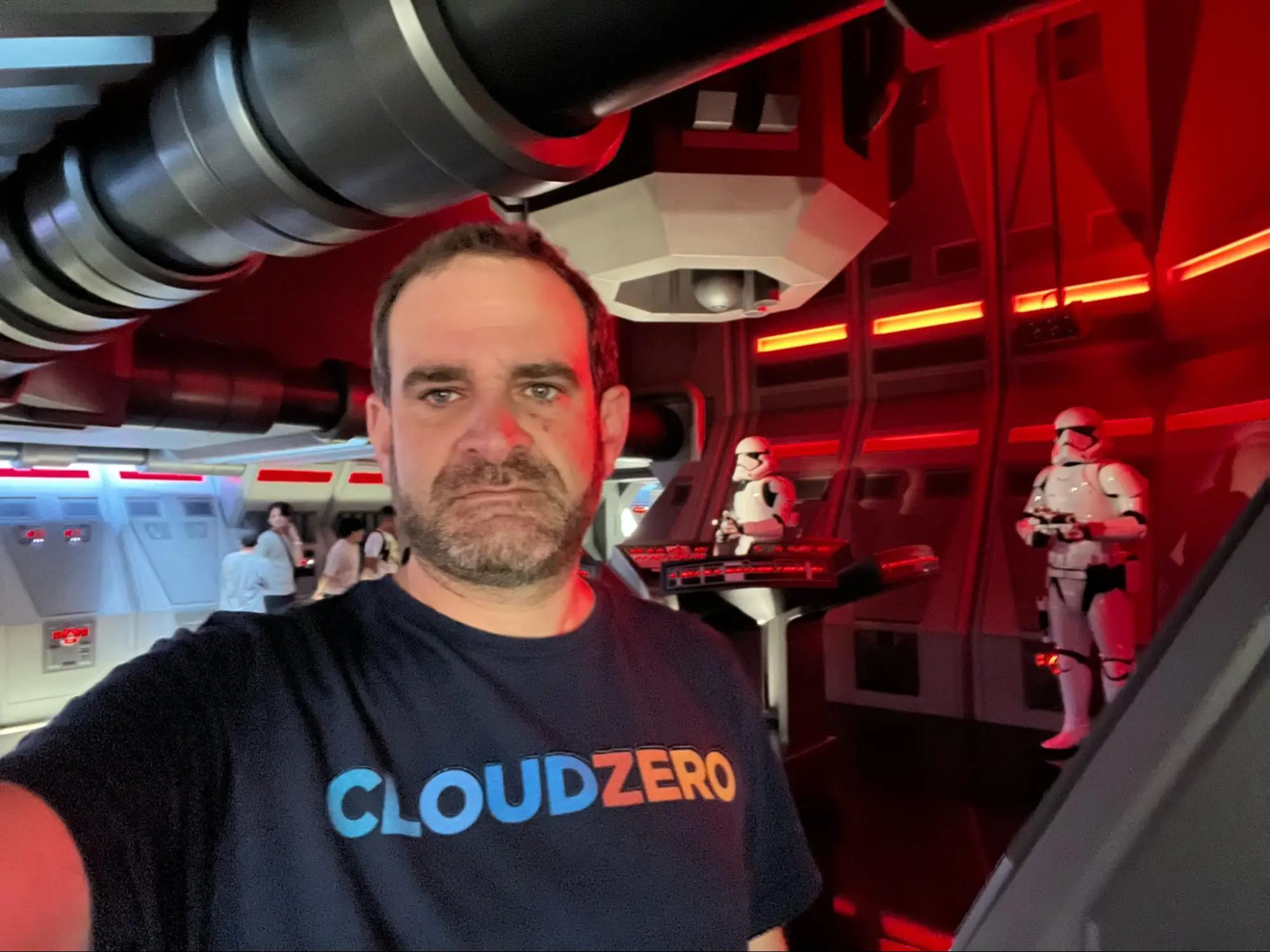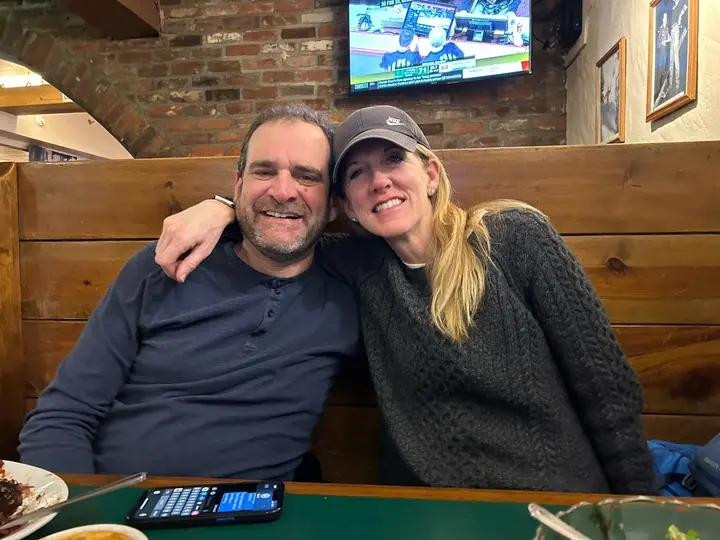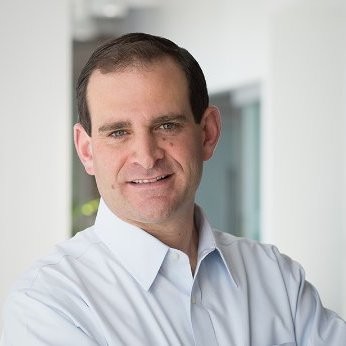CloudZero just closed at $32M Series B fundraising round in the weakest funding environment since the dawn of the pandemic. The round was led by Innovius Capital and Threshold Ventures, with continued support from existing investors Matrix Partners, Underscore VC, and G20 Ventures.
CloudZero is a SaaS product, a data-dense platform delivered via the cloud, mostly to other SaaS companies and digital native businesses (DNBs). If you paid any attention to tech trends last year, you know 2022 was not exactly a banner year for SaaS.
Cooled-off economic markets threw emergency brakes on DNBs that had expanded rapidly during the pandemic, prompting stock plunges, layoffs (well over 360,000 in tech since January 2022), and one very morbidly worded deck from Sequoia Capital, one of Silicon Valley’s most prominent venture firms:
“We believe this is a Crucible Moment … . Companies who move the quickest have the most runway and are most likely to avoid the death spiral.”
(As a lifelong “Star Wars” fan, I can’t not hear Darth Vader’s entrance music here …)

We finalized our first term sheet on a day trip to Disney with my family and nieces.
What “death spiral” was Sequoia referring to? The one caused by the “growth-at-all-costs” mindset that had predominated in tech for years (roughly since the dawn of the public cloud): If your company grew at a sufficient rate, it didn’t matter how much it cost.
Like many who came up in tech over the last couple decades, I was raised in tech with this mindset. The mantra was, “Triple, triple, double, double”: If you could multiply your top-line revenue by three, then three, then two, then two in four consecutive years, you were on your way to a “unicorn” valuation and a monster equity payout.
But this mantra was an emergent property of economic conditions that abruptly ceased to exist last year. One of those conditions was historically low-interest rates, which had hovered near zero more years than not since the Great Recession.
Another was the fact that there were still many greenfield opportunities in SaaS and the public cloud offered rapid development and infinite scale — innovation at the speed of thought.
An influx of cash and an engine of infinite scale made anything seem possible. The earliest, sturdiest settlers in the digital-native landscape could scale at unprecedented paces, and to unprecedented levels — and if they were the first in their space to do so, they could justify the “growth-at-all-costs” mindset.
Cue 2022: Inflation and interest rates climb, stock pullbacks, layoffs, bank failures, funding slowdown.
All really exciting for a first-time CEO raising money for the first time.
And yet, despite almost nothing but signs that this would be an immense uphill battle, CloudZero has $32 million in new funding to help us grow our team, perfect our product, and spread it throughout the tech world.
Why, in such a beleaguered tech funding environment, was CloudZero successful?
The Mixed Blessing Of Infinite Scale
The tantalizing promise of SaaS was infinite scale. Unlike brick-and-mortar businesses, which scaled within the confines of our spatial world, DNBs could scale as fast and as much as they gained new business.
For example, when Blockbuster wanted to grow, they needed more real estate in more cities and towns for more video stores. But when Netflix streaming wanted to grow, it just needed new subscribers with internet connections.
Everyone, everywhere with an internet connection and an appetite for “The Office” was a potential new customer — not just people who happened to live within a certain radius of a particular strip mall.
Infinite scale — very exciting.
The promise of infinite scale has applications in just about every business realm. B2C products like Spotify, Uber, Duolingo, and DoorDash would scarcely be possible without it — not to mention the B2B services supporting them, like Salesforce, Klaviyo, and of course, Amazon Web Services (AWS).
The engine powering infinite scale, removing the constraints of the physical world, making it possible for any DNB to scale as fast as it could generate new demand, was (and is) the public cloud.
What started with AWS — and has since expanded to a plethora of generalized and specialized services including Google Cloud Platform (GCP), Azure, MongoDB, Snowflake and Databricks — was (and is) the premise from which infinite scale proceeded.
And for years, companies vying for digital native prominence didn’t think much about what the cloud cost them. That’s partly because it started out as a lightspeed alternative to buying physical servers, and partly because of the first-settlers mentality outlined above: A certain level of growth could justify any upfront investments.
But throughout the 2010s, the cloud gradually shifted from “very fast datacenter alternative” to “very expensive infinite scale necessity.” In 2009, companies collectively spent about $1 billion on the public cloud. Ten years later, in 2019, that number had ballooned to $100 billion.
Now, in 2023, Gartner expects companies to spend nearly $600 billion on the public cloud. There are more than 360 vendors selling cloud services, and 550 cloud platform services across 22 categories.
$600 billion is more than the entire GDP of Sweden. Over 360 vendors is quite a bit more than where we started, when everyone was piling into AWS.
So, let’s take a step back: On one hand, 2022 and 2023 have been characterized by an abrupt need for companies — especially tech companies — to slash their costs and avoid “death spirals.”
On the other hand, cloud costs are still rising at a precipitous rate; if accurate, Gartner’s 2023 public cloud spend forecast would represent about a $100 billion (20%) year-over-year increase from 2022.
By this point, the math should do itself. Growth-at-all-costs hit its peak in 2022. Public cloud spending, which lay at the core of the growth-at-all-costs mindset, is being forced through an abrupt paradigm shift.
No longer do companies have carte blanche to provision as many cloud resources as it takes to grab as much market share as possible, as quickly as possible. The cloud is being subjected to the same criteria as any other core investment: grow efficiently, and power demonstrable ROI.
A paradigm shift like that doesn’t happen overnight. And organizational cloud-buying habits don’t become perfect just because their investors release scary decks.
The shift from cloud recklessness to cloud efficiency will depend on a platform that both quantifies and optimizes cloud efficiency, that empowers cloud engineers to proactively manage their own cloud costs, and that’s equipped to handle the complexity of modern cloud provisioning.
A platform like CloudZero.
What Sets CloudZero Apart
CloudZero brings business fundamentals to the public cloud, which for years has been used without them, and now so desperately needs them. CloudZero shows you what you’re spending, who in your organization is driving it, whether it’s healthy, and how to optimize it.
There is no SaaS company or DNB in the world that doesn’t need all of this information.
CloudZero was designed for a multicloud world, for the FinOps era, for the software engineers whose job it is to ship cost-effective code — and whom companies have long struggled to engage in true cloud cost management. Here’s a deeper dive into how CloudZero works — and what sets us apart.
1. Complete visibility
CloudZero AnyCost™ ingests 100% of customers’ cloud spend — including all public cloud providers (AWS, Google Cloud Platform, and Microsoft Azure) and all PaaS and SaaS platforms (Snowflake, New Relic, MongoDB, Databricks, etc.).
Given that 98% of companies have adopted a multi-cloud infrastructure provider strategy, 100% ingestion is a necessity.
After it ingests the spend, CloudZero normalizes it all into a common data model. All spend, in any provider combination, gets converted into a common model, readable by our entire platform. No exceptions.
2. Business context
Once spend is ingested, CloudZero CostFormation® combines billing and telemetry data to allocate every penny of taggable and untaggable spend — including shared resources, multi-tenant architecture, and Kuberentes.
This shows software teams what’s driving their spend — customers, features, teams, microservices, etc. — and minimizes time spent on manual tagging or in spreadsheets.
Again, in the growth-at-all-costs world, accounting for every penny of your spend just wasn’t priority number one. So, organizations haven’t socialized sophisticated allocation frameworks, and now they’re being asked to, on a dime.
That’s what makes CostFormation® so urgently necessary. Rather than diverting time and resources from innovation and strategy, companies can plug into CloudZero and get full allocation within hours.
3. Engineering-led optimization
CloudZero’s belief is that the cloud cost issue isn’t fundamentally a finance or IT issue. It’s an engineering issue.
Every time an engineer architects a solution or ships a new line of code, they incur a new cost. Every cloud engineering decision is, in effect, a cloud buying decision. To date, engineers have not had a platform that gives them relevant, timely data about the cost consequences of their building decisions.
Until CloudZero. CloudZero makes it easy for engineers to optimize the fixed and variable costs associated with their cloud consumption, including AI-powered anomaly detection.
We are the only platform to provide such complete, accurate, timely data to engineering teams, to provide such targeted indications of where to take action, and thus the only platform to power engineering-led optimization — addressing the cloud cost problem at its root.
4. Cloud ROI
The overarching goal for any core business investment is to calculate how much business value it’s driving. Without 100% ingestion, 100% allocation, and optimization power with cloud engineers, it’s impossible to assess your cloud investment’s ROI.
That’s why CloudZero helps all customers develop unit cost metrics that provide a comprehensive view of their unit economics. Unit cost metrics are driven by both billing data — how much you’re spending in the cloud — and telemetry data — which of your customers, products, features, teams (or whatever else you want to track) are using which cloud resources.
This way, a video game company like Beamable can calculate its cost per game. An account-based marketing company like Klaviyo can view its cost per customer touchpoint (email, SMS, etc.)
Whatever unit metric most represents your company’s core value offering, you can use CloudZero to calculate it, and by extension, assess the healthiness of your cloud spend growth.
If you’re growing, your cloud spend is going to grow, just like any core investment would. But if your unit costs are staying flat (or ideally decreasing), you can confidently say your spend growth is healthy.
Why CloudZero Closed A Successful Series B
All of which brings me back to the question at the core of this article: Why was CloudZero successful in such a bleak funding environment?
Because we need to exist. No other cost management platform does, with such precision and power, the four things outlined above. Every SaaS company or DNB is facing new pressure to bring business fundamentals to the cloud, and we are the best option for it. Period.
But being the best option alone did not make a successful Series B a forgone conclusion. There were many other factors that resulted in our successful fundraising:
- Maniacal focus on healthy SaaS metrics. We had 10x growth since our last fundraise and had a significant pipeline. But that was not enough. We also had strong gross revenue retention and a solid plan for increasing net revenue retention. We improved our gross margins (read how we used CloudZero to find $1.7M of annualized cost savings last year) and had a strong handle on improving our sales efficiency and customer acquisition cost (CAC) payback. We had multiple plans at different levels of cash burn.
- Making sure investors understood our whole story. We have a differentiated product. Our customers love us. We’ve made transformational changes since I took over as CEO in November 2021. Spending time with investors looking at metrics in our data room alone did not tell our whole story. We spent many hours perfecting our story.
- Getting out of the office. Our first offer was the result of an introduction to a NY-based firm I met at an investor conference in San Francisco. The next three offers were from firms I met at the KubeCon and AWS re:Invent conferences in Detroit and Las Vegas. The first meetings I had with four of the five offers we received were face to face.
We’re hitting our numbers and strengthening our unit economics. We’ve got a differentiated value proposition in a growing market. We’ve got an amazing team, a product customers love, and a roadmap to becoming an integral piece of the tech stacks for every digital business.
And this is only the beginning.
A Word Of Gratitude

Agreement finalized on my birthday while skiing in Colorado …
It’s moments like this that drive home how lucky I am to work with such an incredible team. Our Series B does not happen without them.
First and foremost, I want to thank our customers. You make us better every day and the sheer number of customers willing to speak to potential investors was impressive. I am forever grateful.
I am deeply grateful for the continued support of our existing investors: Matrix Partners, Underscore VC, and G20 Ventures. Many people across all three firms played critical roles in the process. Thank you Tim Barrows, Jimmy Orsillio, and Bill Wiberg for your leadership.
Thank you Don Bulens for being such a supportive Chairman and trusting me to take the reins from you.
My day to day team of Brian Devaney who kept me organized as we decided which firms to target and who somehow knew an investor at every firm on the planet. Joe Morrison, who kept all our financials organized and metric calculations accurate without ever complaining. And of course, James Zevzavadjian for balancing college life with managing our data room and overdelivering on every supporting project we could throw at him.
Every great fundraising needs a great legal team. I am particularly appreciative of the support of David Horne and the amazing team at Gunderson.
No fundraising is complete without a lead investor. A huge thank you to Justin Moore, Stu Posluns, and Adithya Rajan at Innovius Capital, and Josh Stein and Arpit Mittal at Threshold Ventures for leading the round and believing in us.
I was also super impressed by the willingness of peer CEOs from other software companies and of investors who passed on us to help. There are too many to mention, but the support from the broader software and venture ecosystem was immense.
I could not be thankful enough for the support of my family and wife Mary Pergola. Despite the best planning and intentions, I somehow managed to align critical fundraising activities with a family trip to Disney World, ski trips, college tours and beach vacations. Not to mention all the overtime and travel in between. Yet they still support me every day.
None of this would have been possible without the amazing team at CloudZero — building great products, winning six figure deals, delighting our customers. Special thanks to Erik Peterson, Bill Buckley, Mark Musselman, Greg Barrette, Brady Lenahan, Matt Manger, and Natalie Jones for helping me tell our story.
I couldn’t be more excited about the future of CloudZero. We’re harnessing the power of the public cloud, and turning it into the engine of efficient growth that it was built to be.
Thank you to everyone who made this possible, and who will continue to make CloudZero the gold standard in cloud efficiency: our team, our investors, our partners, and of course, our customers.

My wife planned a trip to celebrate our 20th anniversary and us both turning 50. It eventually coincided with our last key milestone, money in the bank!








